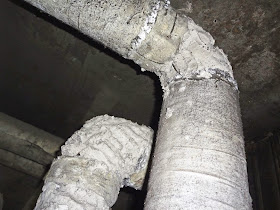Major Asbestos Violations Result in $370,000+ in Fines
for Two Companies
The Washington Department of Labor
& Industries (L&I) has cited two employers for violations that exposed
workers to asbestos during the demolition of a Seattle apartment building.
Nov 10, 2014
An investigation by Washington’s
Department of Labor & Industries (L&I) into a demolition project at a
Seattle apartment building found a total of 19 willful and serious safety and
health violations. As a result, the two businesses involved in the project have
been fined a total of $379,100.
Partners Construction Inc., of
Federal Way, Wash., was cited for a total of 14 willful and serious violations
and fined $291,950. Asbestos Construction Management Inc., of Bonney Lake,
Wash., was fined $87,150 for five willful and serious violations.
The violations were for asbestos
exposure to workers, asbestos debris left on site and other violations that
occurred during demolition of an apartment building in the Fremont
neighborhood. The three-story, five-unit apartment building was originally
constructed with “popcorn” ceilings, a white substance containing asbestos
fibers, as well as asbestos sheet vinyl flooring.
Asbestos is an extremely hazardous
material that can lead to asbestosis, a potentially fatal disease, as well as
mesothelioma and lung cancer. Removal of asbestos-containing building materials
must be done by a certified abatement contractor who follows safety and health
rules to protect workers and the public from exposure to asbestos. The
contractor also must ensure proper removal and disposal of the asbestos
materials.
Partners Construction Inc., a
certified asbestos abatement contractor at the time, was hired by the building
owner to remove the asbestos before the apartment building was demolished.
After several weeks, Partners
provided the building owner with a letter of completion indicating that all
asbestos had been removed. When L&I inspectors responded to a worker
complaint, the inspectors found that the removal work had not been done and
approximately 5,400 square feet of popcorn ceiling remained throughout, as well
as asbestos sheet vinyl flooring.
Partners came back to finish the
abatement work; however, due to a prior history of willful violations, L&I
was in the process of revoking Partners’ certification to do asbestos abatement
work. In May, Partners was decertified and went out of business.
A new company, Asbestos Construction
Management Inc. (ACM), owned by a family member of the Partners owner, took
over the job using essentially the same workers and certified asbestos
supervisor as Partners, and sharing the same equipment.
A subsequent L&I inspection of
ACM found many of the same violations as in the Partners’ inspection. L&I
has initiated decertification action against ACM.
The employers have 15 business days
to appeal the citation.
Penalty money paid as a result of a
citation is placed in the workers' compensation supplemental pension fund,
helping injured workers and families of those who have died on the job.




























